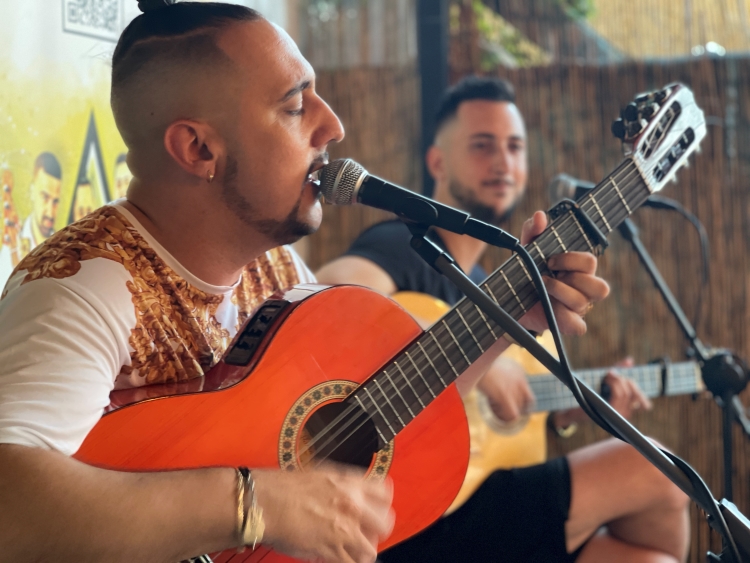Rumba Catalana, not only music but ‘a way of life’
Discover Catalonia’s home-grown genre through the eyes Johnny Tarradellas and Los Desmadraos

Catalan rumba music dates back to the 1950s, developing among members of the Romani community in Barcelona’s Raval and Gracia neighborhoods. Their style was heavily influenced by flamenco and Latin American music.
“Catalan rumba is a music genre that appeared years ago,” Carlos Cuevas of Badalona-based band Los Desmadraos tells Catalan News. “It’s a fusion between salsa and Andalusian flamenco rumba.”
‘Rumberos’, as rumba musicians are called, play percussion instruments and guitars, and are known for the ‘ventilador’, or fan, a special way of strumming and tapping the guitar at the same time.
Kevin Morales, who plays alongside Carlos Cuevas in Los Desmadraos, explains that there are some who go as far as saying the ‘ventilador’ comes from the güiro, a ridged percussion instrument commonly used in Caribbean music.
Listen to our Filling the Sink podcast episode to learn more about Catalan rumba and its legends.
More than just music
All of the ‘rumberos’ Catalan News spoke with agree that Catalan rumba is not only a kind of music.
“People think Rumba is just about doing the ‘ventilador’,” a visibly frustrated Johnny Tarradellas says. In his early sixties, Tarradellas has been a ‘rumbero’ for five decades - if anyone should know, it’s him. “Rumba is more than just music, it’s a way of life,” he insists, recalling the old ‘rumbero’ masters he once lived side by side with on Carrer de la Cera street in the Raval.
Like Tarradellas, Cuevas and Morales started playing music at a very young age.
“Kevin and I started to learn on the streets,” Cuevas says of their upbringing in Pomar, a working-class neighborhood in Badalona. “My uncle played the guitar a little bit and told us ‘hey, come, I’ll teach you some chords’.”
For Morales, “it’s a way of life, of being authentic and having people by your side.” It also provides him with a sense of belonging in his community. “I think it’s the best neighborhood in the world,” he says of Pomar. “It’s very ‘rumbero’, it’s very authentic. When you go there it’s like going back to the eighties.”
A lifetime of rumba
Tarradellas got an early start in the world of Catalan rumba. “When I was 13 years old, El Chacho asked me to play backup at a concert,” he recalls. “The gig was at a nightclub and I stayed out until 5 am, got breakfast, and went to hockey practice. They told me I stank of smoke, I stank of the night,” he laughs.
Tarradellas then went on to play guitar for Peret, one of the greatest ‘rumberos’ of all times. He also founded disco rumba band Tobago and then Chipén.
Tarradellas hasn’t left the world of music, but in the past few years, he’s taken on a bigger role as a producer than before.
Peret is one of the many legends ‘Los Desmadraos’ look up to. Other big names include el Pescaílla - sometimes credited as the ‘father of rumba’, although sometimes that title is given to Peret - as well as Dolores Vargas, Gato Pérez, Los Manolos or Los Amaya.
Many of these rumba legends played at the Barcelona 1992 Olympic Games closing ceremony, considered by some to be one of the genre’s highest points.
Post-Olympics Catalan rumba
Years later, rumba is still played at local festivities, weddings, and beach bars by groups like Los Desmadraos.
“There are some old but typical songs such as: ‘Volaré’, ‘Sarandonga’, ¡Marcha, Marcha!, and Djobi, Djoba. We’ll always play these ones,” Cuevas says. And, in ten years’ time, we will still be playing the same classics.”
Catalan rumba continues to evolve and influence Romani and non-Romani artists alike - but older ‘rumberos’ like Tarradellas hope classic rumba will make a full comeback some day and fight to keep rumba history alive.